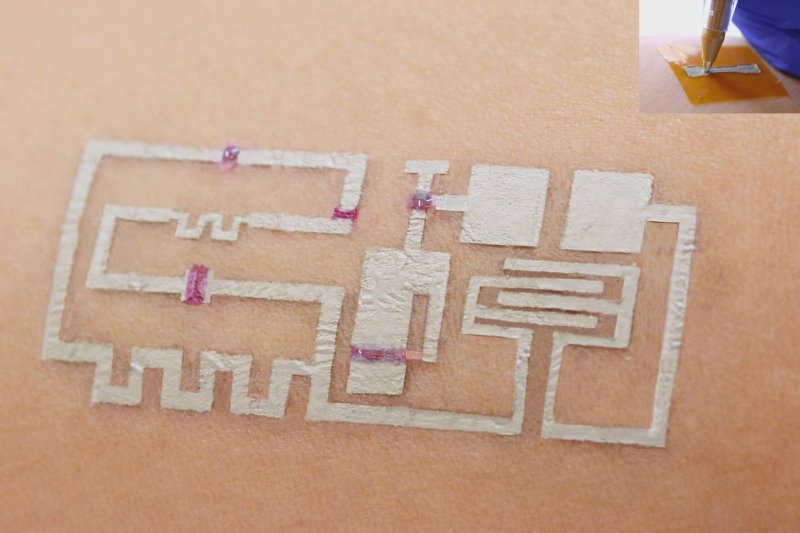Wearable sensor technology, which helps doctors check a variety of health indicators, has in recent years advanced from bulky devices to flexible patches that stick to people like temporary tattoos. These prefabricated sensors can be expensive, however. They also tend to follow skin contours imperfectly, making them sensitive to the wearer’s motion. Researchers say a new drawn-on-skin electronics system, described in Nature Communications in July, offers a solution to both problems.
A team led by biomedical engineer Faheem Ershad of the University of Houston first developed a conductive ink using silver flakes in a polymer solution that is compatible with human skin. The researchers loaded the ink into modified ballpoint pens, then placed a stencil made of tape on a volunteer and traced within it to draw the requisite circuitry.
…
Using this ink alone, the researchers measured skin hydration and the electrical activity of heart and skeletal muscles. Because it conformed perfectly to the skin, wearers could walk around without jarring the sensor and thus reducing data quality. The ink resisted sweat and rubbing but was easily removed with a wet paper towel and soap.
The researchers plan to eventually make their sensors truly wireless by incorporating more advanced ink-based circuits. After that achievement, they say, people could use affordable kits of stencils and pens to monitor their own health at home.































